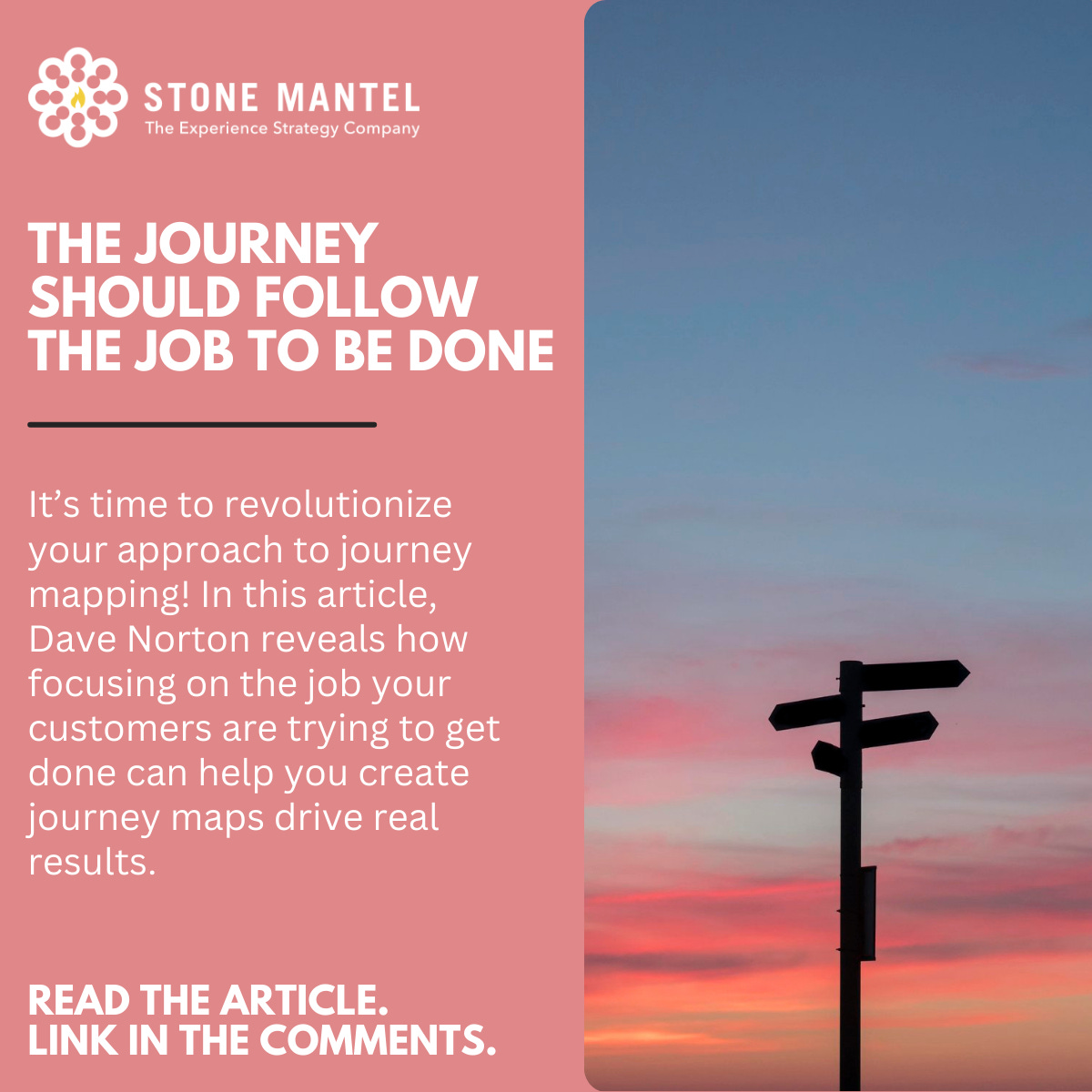The Journey Should Follow the Job to Be Done
Are you tired of creating journey maps that miss the mark?
It's time to ditch the farcical personas and company-centric stages and focus on what really matters: the job your customers are trying to get done.
In this article, I reveal how to create journey maps that truly resonate with your customers. By starting with the job to be done, you can design experiences that fit your customers' needs, whether they're driven by functional, emotional, social, or aspirational goals.
Are you ready to revolutionize your approach to journey mapping? Click the link to read the full article and learn how to create journey maps that drive real results!
We've all been there - pouring countless hours into crafting detailed journey maps, only to find that they don't quite capture the essence of our customers' experiences or drive the impact we hoped for.
Well, it's time to get real about the challenges we face with traditional journey mapping approaches. Vote on the poll above then share your thoughts in the comments section below.
Avoid costly mistakes in your customer journey mapping. From relying too much on stereotypical personas to assuming linear journeys that align with your business model, these are pitfalls that could derail your efforts.
Companies obsess over "who" their customers are instead of understanding "what job" those customers are trying to get done. It's a costly mistake that can lead to underwhelming experiences.
Check out the article below to dive into the strategic discipline of Jobs to be done - the real key to creating value. From functional needs like powerful tools, and emotional drivers like evoking the right feelings to social motivators like connecting people. Not to mention the highest form - aspirational jobs that help customers become who they want to be.
Quit failing at needs-based innovation and learn how focusing on the true jobs customers hire you for can transform your approach. Rethink your customer journey mapping by first nailing their functional, emotional, social, and aspirational expectations.
Experience strategists, it's time to weigh in! When crafting customer journey maps, what's your top priority?
Too often, organizations fall into traps like forcing journeys into their sales funnel or making unfounded channel assumptions. But our approach flips the script - leading with the true jobs customers need accomplished in a given situation.
Vote in the poll and let's spark a discussion around experience-led journey mapping that genuinely resonates. I'm really curious to hear your perspectives on getting this pivotal work right!
Ditch the fictional personas and stop forcing customers into journeys that mirror your sales funnel. The real key to transformative journey mapping? Starting with the Jobs to Be Done.
Basing your journeys on the functional, emotional, social or aspirational jobs customers actually want accomplished allows you to design experiences tailored to their true needs in each situations.
Whether it's an urgent purchase mission or the aspiration to become their best selves, understanding the Job to Be Done should be the core driver - not contrived personas.
This case study showcases how leveraging strategic frameworks and putting the customer first can drive change. When Southern Company Gas needed to migrate to self-service channels while boosting satisfaction, they turned to us for deep experience research.
By truly understanding the jobs customers needed to get done at every touchpoint, Southern was able to create resonant digital experience and instill a customer-obsessed mindset across the organization. The results? Upleveled UX, successful self-service adoption, and a future-forward operating model.
Are you interested in obtaining the same results for your company? Contact Stone Mantel at the button below!
In the Age of Behavior, journey maps are just the beginning. What hidden motivations have you uncovered in your customer journeys?
Share an example of a non-functional job to be done that transformed your understanding of your customers' experiencers. Drop your insights in the comments.
Unlock the full potential of your journey maps with this insider tip from Stone Mantel:
Harness the power of Miro Board to visualize not just touchpoints, but the entire emotional landscape of your customer's experience. This technique goes beyond traditional mapping, revealing the hidden drivers of human behavior that can transform your business.









